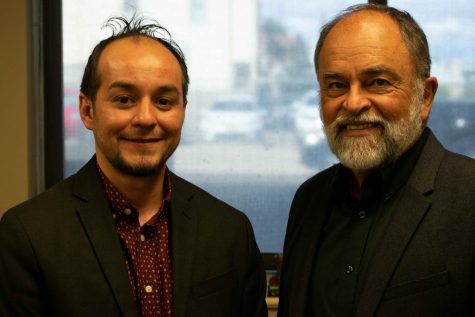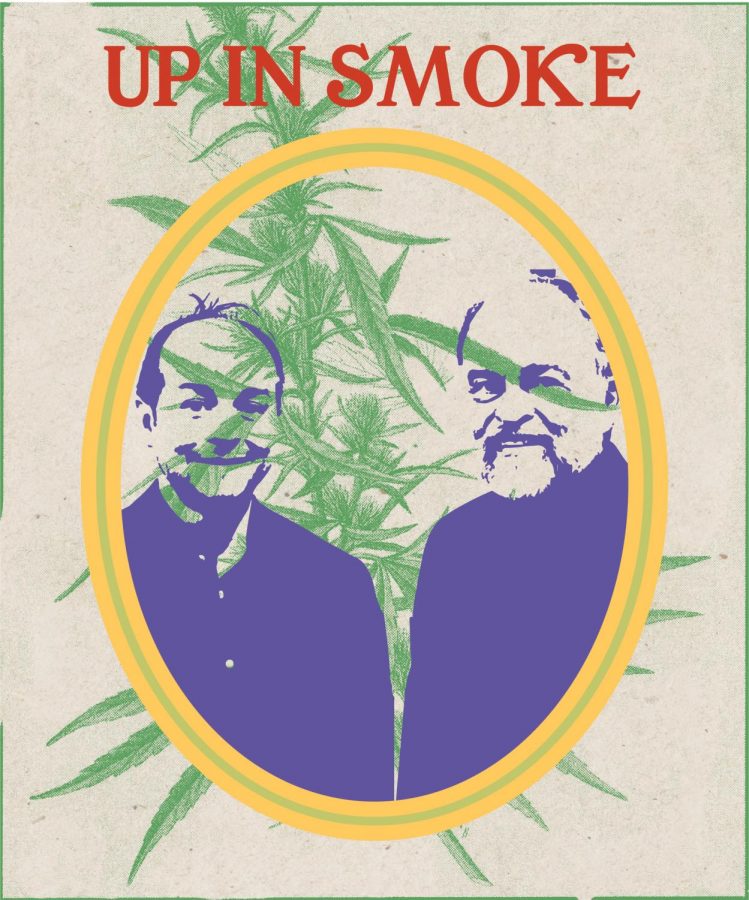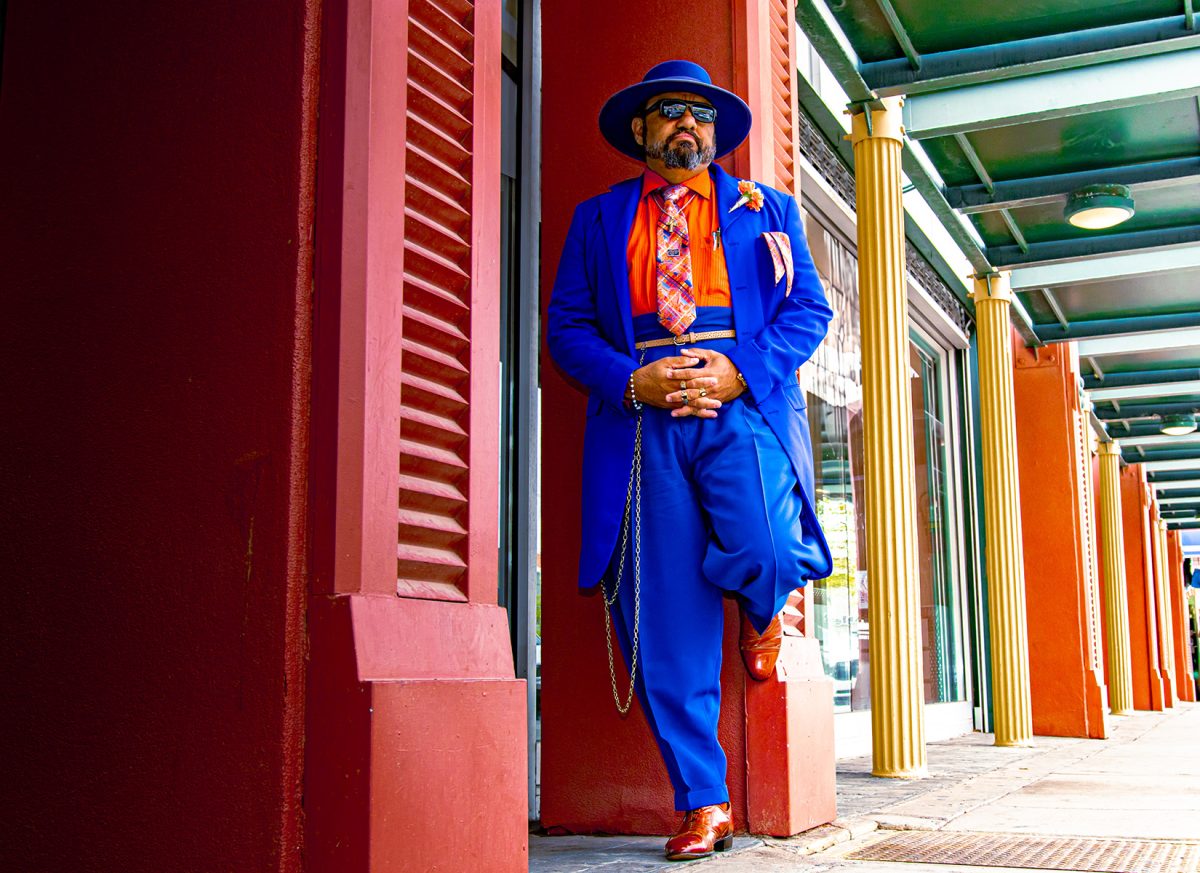Currently, in the United States, more than half the states have legalized medicinal marijuana use, while only a handful of states have legalized recreational use.
Texas alone is surrounded by five states that have legalized the medicinal use of marijuana—Louisiana, Arkansas, Oklahoma, New Mexico and Arizona. At the UTEP School of Pharmacy, a professor, program coordinator and a dean took it upon themselves to create a report on marijuana with a focus on the Paso Del Norte Region.
Gabriel Freitze, associate professor at the School of Pharmacy, is the lead researcher in this report. He began his research shortly after graduating with his Ph.D. in psychology in May 2018.
Freitze’s research interest, when he is not teaching biostatistics, is investigating risk perceptions, risk behaviors and health communication, and how that translates into different topics from vaccinations to abuse of legal and illegal drugs.
Nora Hernandez, program coordinator and manager at the UTEP School of Pharmacy contributed to this report by helping co-write the Paso Del Norte Region in the report. José Rivera, founding dean of the UTEP School of Pharmacy, is the one who put this report into fruition when he proposed to the Paso Del Norte Health Foundation a more in-depth analysis on marijuana, specifically with the interest in medicinal marijuana.
Rivera also teaches herbal medicine at Texas Tech University Health Sciences School of Nursing. Recently, university students asked him during a lecture why nobody is discussing the effects of medicinal marijuana.
“That clicked in my mind that we need to learn more, no matter what, because … we have 33 states … more than half of the states have made it medicinal legal use,” Rivera said.
Marijuana contains more than 400 chemicals and approximately 104 are cannabinoids. Cannabinoids are molecules that can bind to cannabinoid receptors in cells. There are two primary cannabinoid receptors: CB1, which is primarily expressed in the central nervous system and CB2, which is primarily expressed in the immune system. Currently, research has largely focused on examining CB1 and CB2 receptors in response to two popular cannabinoids, Delta-9 Tetrahydrocannabinol (THC) and Cannabidiol (CBD).
THC is the psychoactive compound within marijuana that leads to a “stoned” state. Whereas, CBD is a cannabinoid that contains many of the same therapeutic properties of THC, but it does not include the psychoactive components.
One of the main reasons why Rivera has pushed for this comprehensive report on marijuana in the Paso Del Norte Region is because even in a state as conservative as Texas they are experimenting with a marijuana compound that is entirely made of CBD with a low-level of THC.
This experiment is strictly for the narrow purpose of treating seizures and epilepsy in children when all other options have been exhausted
“We know that these trends are happening. So we have to address them,” Rivera said. “So that’s where we decided to propose (this report).”
Rivera asked Freitze to lead this comprehensive report. Through their research, some findings were surprising and disappointing in terms of history on how marijuana became illegal and the reasons behind it being outlawed.
They said the plant became illegal due to prejudices associated with Mexican immigration after the Mexican Revolution. The rhetoric that was used to describe Mexican immigrants stated they were coming to the U.S. illegally and they were bringing their drug of choice—marijuana—causing them to engage in acts of violence or rape.
This belief led to marijuana being scheduled as a “Schedule I” drug. Schedule I drugs are substances, or chemicals that are defined by the federal government as drugs with no currently accepted medical use and a high potential for abuse. These drugs are the most dangerous drugs of all the drug schedules with potentially severe psychological or physical dependence. Examples of schedule I drugs are heroin, lysergic acid diethylamide (LSD), marijuana (cannabis), methylenedioxymethamphetamine (ecstasy), methaqualone and peyote.
At the same time, marijuana was accepted in the U.S. under the label “cannabis.” Americans had cannabis in their homes and in medications but at the time the public was not well informed.
“It was accepted for medical use at the U.S. Pharmacopeia, which is like the Bible of medication use in the U.S., but it was called cannabis,” Rivera said.
What came next during President Richard Nixon’s war on drugs is where Rivera is the most perplexed. El Paso was the first city to ban marijuana in 1915 and used the ban as further reason to arrest and deport Mexicans, Rivera said.
Rivera was not previously aware of the history of marijuana. He has been a pharmacist for the past several years and was trained to believe that marijuana was a Schedule I drug with no medicinal purposes. But upon researching the history, he was surprised.
“We accepted that, and I don’t want to try to go against the DEA (Drug Enforcement Agency) or the federal government. That’s not the intent of what I’m telling you,” Rivera said. “It’s just that was a surprising finding, for me, somebody that trained years back that I didn’t realize the history behind this, and then out of all places it was in El Paso.”
Upon further research, Cannabidiol or CBD oil, also known as Epidilox, which was reclassified from a Schedule I drug to a Schedule V drug in September 2018, for its use for treating children with epilepsy.
Schedule V drugs are drugs with a lower potential for abuse and contain limited quantities of certain narcotics. These drugs are commonly used for antidiarrheal, antitussive and analgesic purposes.
The rescheduling of CBD is a huge step further in research. The fact that CBD is now a Schedule V drug allows research to be conducted. For a Schedule I drugs, there is a rigorous protocol with the DEA involved that requires a three-step process for approval.
In regards to the Paso Del Norte Region in the report, El Paso is in between one state that became the 12th state to legalize medicinal marijuana (New Mexico) and one country (Mexico) that legalized marijuana in 2017. Texas has just begun to have legalization discussions. Monday evening, the Texas House passed a bill that would reduce penalties for low-level possession of marijuana.
Back in 2017, the City of El Paso passed the First Chance Program, which allowed first-time offenders with possession of four ounces or less of pot to enroll in a program of eight hours of community service and pay a $100 fine while avoiding an arrest and public record.
The report also found that the number of pounds of marijuana being smuggled through the border has been decreasing. In 2015, there were approximately 21,543 solid pounds of marijuana seized, while in 2016, there were approximately 13,299 pounds of marijuana seized.
“This is the key is to become more knowledgeable about it. … And that includes us, you know, healthcare providers,” Rivera said.
Freitze will present his report at length May 13 to the Paso Del Norte Health Foundation. He plans to discuss his findings as well as the current attitude shift on marijuana products, the dynamics of the chemicals in marijuana, health findings and then conclude the presentation with marijuana and tobacco use and how they have an additive or synergistic effect between the two products.
“I think it’s important to really emphasize the history because a lot of people are going to get back to ‘oh, it was a gateway drug’ or there were problems, health consequences associated with it,” Freitze said. “So I’m going to give a pretty good explanation of the history.”

Gabriel Freitze and José Rivera are two of the three people who developed the report for the El Paso Del Norte Region.










